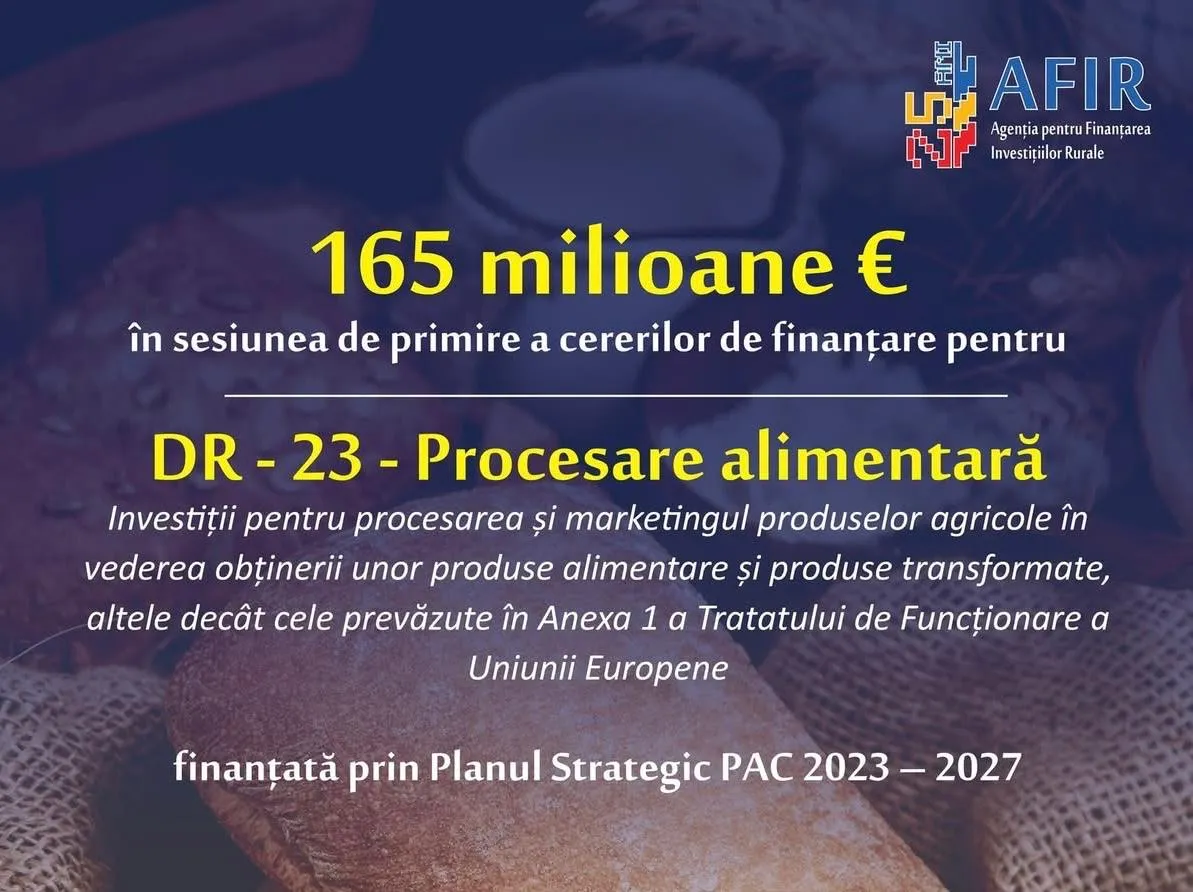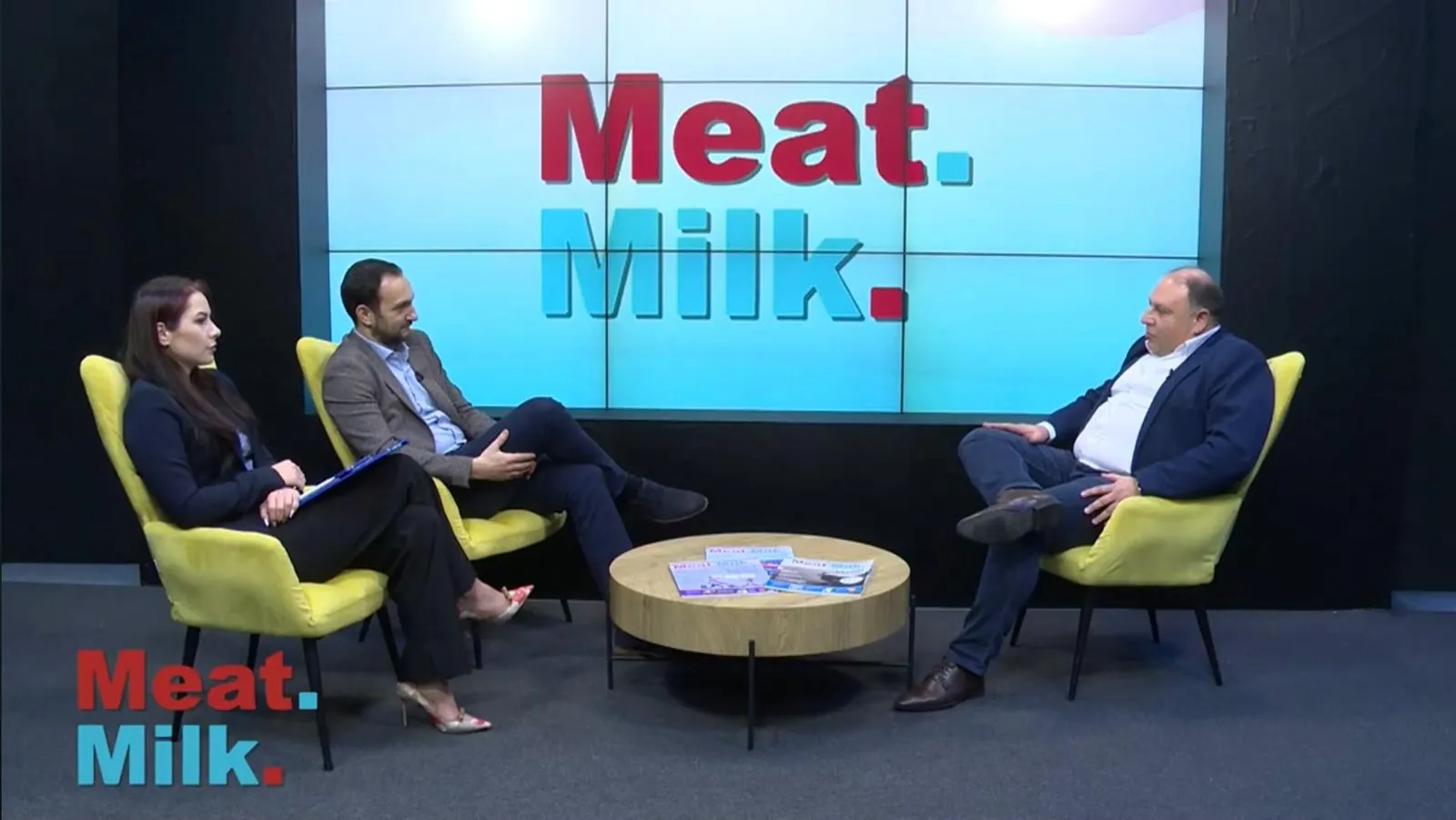
Unlike the dominant narrative that tends to blame consumers for making poor food choices, there is growing evidence that individual choices are shaped by the so-called "food environments" in which consumers navigate. This is shown in a recent study published by the European Consumer Rights Bureau (BEUC) titled "Illusion of Choice." However, for those who look a little more closely in the grocery store, it becomes clear that there is no free consumer choice, made in a vacuum and based on the best available information, but rather manipulated by a complex range of influences beyond individual control.
The Concept of "Food Environments"
Currently, food environments do not ensure that the healthy and sustainable option, which is not always the easiest for consumers, is available. Most individuals do not realize the extent to which their choices are guided by a multitude of factors, from the advertisements they see on billboards in the street to the range of food products available at the supermarket where they shop, through promotional offers and discounts offered by retailers.
Food environments represent the "physical, economic, political, and socio-cultural context in which consumers interact with the food system to make decisions about acquiring, preparing, and consuming food."
The factors influencing consumer choices vary from marketing and advertising to promotional offers, food availability, and pricing, as well as the spatial layout in supermarkets, among many others.
The concept of food environments has been described and explained in detail in a policy brief prepared by 24 civil society organizations participating in the EU Coalition for Food Policy, including BEUC, EPHA, and the Eurogroup for Animals. And, this report provides a practical understanding of food environments through real-life examples, both good and bad.
What's Happening at the EU Level?
The Farm to Fork Strategy, the EU model for sustainable food and agriculture published by the European Commission in 2020, clearly states that current consumption patterns in the EU are not sustainable from both an environmental and economic perspective.
It notes that the average intake of energy, red meat (including beef, pork, lamb, and goat), and processed meat, sugars, salt, and fats continues to exceed recommendations, while the consumption of whole grains, fruits, vegetables, legumes, and seeds is insufficient.
While it recognizes the role of food environments and believes that all actors in the food chain should consider their responsibility to support consumers in making healthy and sustainable food choices, the Farm to Fork Strategy does not make concrete proposals for creating favorable food environments.
Instead, it focuses on empowering consumers to make informed, healthy, and sustainable choices, primarily through labeling.
However, while consumer information and labeling are important and necessary (both to enable informed consumer choice and to incentivize producers to improve their products), evidence shows that such measures are insufficient on their own.
Consumer choices are strongly influenced by other elements of food environments, such as advertising and marketing, availability, or prices.
This autumn, the European Commission is expected to present a proposal for a legislative framework for sustainable food systems (FSFS) as one of the flagship initiatives of the F2F Strategy.
It is expected that this legislation will introduce key definitions, objectives, and principles to pave the way for existing and future EU and national food laws to establish a sustainable food system that operates within planetary boundaries.
This must include the promotion of favorable food environments where healthy and sustainable diets, which are more plant-based and involve fewer and better animal products, are the easy choice for people.
Checking Reality
While people grapple with this in their everyday lives, the concept of food environments may sound abstract to many and may not be immediately identifiable, paradoxically.
With the help of their respective organization members, BEUC has collected evidence and examples of such practices from a range of actors (including retailers, the hospitality sector, canteens, etc.) across Europe.
The report does not aim to be (nor should it be in any way considered as) a comprehensive analysis of the good and bad practices of actors in the food chain or the factors contributing to food environments. Rather, the action provides an illustrative snapshot of the numerous factors that constantly influence consumer choices and preferences.
What Do We Mean by Favorable Food Environments?
Favorable food environments are understood as practices that encourage and promote the consumption of healthy, nutritious, and environmentally friendly foods, minimally processed plant-based foods such as fruits, vegetables, legumes, seeds, and whole grains, as well as limited amounts of animal-derived foods (ADF), with high animal welfare standards.
Conversely, practices that do not conform to the above criteria are considered to contribute to unfavorable food environments. These include practices that push consumers to consume foods that contribute most to unhealthy diets, such as highly processed foods high in fats, sugars, and salt (HFSS), as well as red and processed meat.
Diets heavily reliant on these products are linked to the development of several non-communicable diseases (NCDs), such as obesity, diabetes, various types of cancer, and cardiovascular diseases.
Practices that push consumers toward the consumption of foods with a high environmental impact and/or low animal welfare standards, such as ADF from industrialized animal farming systems, are also considered to contribute to unfavorable food environments. This type of food production is associated with greenhouse gas (GHG) emissions and the overuse of resources such as land, water, and energy.
What is "sustainable healthy diet"?
According to the FAO, healthy sustainable diets "have low pressure and impact on the environment, are accessible, safe and equitable, and are culturally acceptable".
They are "based on a wide variety of unprocessed or minimally processed foods, balanced across food groups, while restricting highly processed foods and beverages."
These "include whole grains, legumes, seeds, and an abundance and variety of fruits and vegetables" and "may include moderate amounts of eggs, dairy, poultry, and fish; and small amounts of red meat”.
In the EU, average intakes of energy, red and processed meat, sugars, salt and fat continue to exceed recommendations, while consumption of whole grains, fruit and vegetables, legumes and seeds is insufficient.
Foods of animal origin
Current meat intakes do not comply with dietary recommendations, consumption exceeding them by 2-4 times. At the same time, only 12% of the EU population consumes the recommended five or more servings of fruit. and vegetables daily.
Aligning Europeans' diets with healthy eating recommendations would contribute to food security, as a considerable proportion of agricultural land is used to produce animal feed rather than food for direct human consumption. It would also significantly reduce the environmental footprint of food.
Indeed, animal husbandry is widely known as one of the main drivers of climate change and biodiversity loss. Food represents 42% of the environmental impacts of an EU citizen's consumption with multiple planetary boundaries exceeded only by the food system. Within the food category, products of animal origin, e.g. meat, dairy and eggs account for most of the impact of food consumption for most impact categories.
When emissions related to feed production, transport and processing are added to emissions from the European agricultural sector, the livestock sector is responsible for 81-86% of total greenhouse gas (GHG) emissions from agriculture.
The Intergovernmental Panel on Climate Change (IPCC) has recognized that lifestyle and behavioral changes, including shifts to healthy sustainable diets, can lead to a 40-70% decrease in global GHG emissions by 2050, improving health and well-being at the same time.
Several European countries have updated their national dietary guidelines to take into account the environmental impact of food choices. For example, Denmark updated its FBDGs in 2021 to encourage people to eat more fruit, vegetables and legumes and less meat.
The recommended amount of meat has been reduced from 500g to 350g per week in the new guidelines, and Danes are advised to eat 100g of legumes, in addition to 600g of fruit and vegetables, per day. Similarly, Spain has updated its FBDGs and recommends a maximum of three servings of meat per week.
Human and animal health
Human and animal health are intrinsically linked, as recognized by the One Health approach. A key aspect linking the two is the use of antimicrobials, the inappropriate use of which – in both humans and animals – is fueling antimicrobial resistance (AMR).
WHO has declared AMR one of the top 10 global public health threats facing humanity. In the EU, the routine preventive use of veterinary antibiotics was banned from January 2022. Sales of veterinary antibiotics almost halved between 2011 and 2021, according to the WHO. latest EU data. Between 2018 and 2021, Member States reached around one third of the 50% reduction target set for 2030 in the Farm to Fork Strategy.
However, some countries continue to lag behind. As the rate of decline in antibiotic sales appears to have slowed since 2017, efforts must be made to maintain this downward trend.
Finally, EU animal welfare standards are currently out of step with scientific developments and European citizens' expectations that farm animals should live a good life. The minimum set of rules set by EU legislation only provides a sub-optimal level of farm animal welfare, as found by the compliance check of EU animal welfare legislation.
In the absence of more ambitious rules, consumers who want to buy animal protein foods derived from animals that have been kept in better conditions must look for the eco-label or other labels developed by the private sector, some of which have questionable credibility.
Both reducing the consumption of animal-based foods and changing the way animals are raised are essential to meeting the challenges mentioned above.
What about the alternatives?
As alternatives, we can find a growing number of plant-based products on the market. They play a role in the shift to diets with lower amounts of animal protein, for example, providing convenience for consumers. However, like their meat counterparts such as burgers and sausages, plant-based products vary in nutritional quality (especially salt and saturated fat content), and level of processing.
Therefore, food manufacturers should work on improving the composition of these products, including the bioavailability of key micronutrients (iron, calcium, B12, etc.) and the presence of potentially harmful substances (eg, soy isoflavones).
The labeling of herbal alternatives should neither mislead consumers nor discourage them from purchasing these products. For example, the use of culinary names of meat on plant-based foods (such as steak, sausage, burger), makes it easier for consumers to know how to integrate these products into a meal, and as such should not be prohibited.
Plant-based alternatives can play an important role in helping consumers move from high consumption rates to a greener eating pattern. However, preference should be given to eating healthy foods from plant sources such as vegetables.
What does the illusion of choice mean?
The illusion of choice refers to the fact that when making decisions about buying, cooking, or eating food, consumer preferences are strongly influenced by multiple factors. Far from being random or unintentional, these factors have been meticulously studied and used to trigger the consumption of certain products.
Relying on consumers' will and responsibility (only) to make better food choices has proven to be an ineffective approach. As such, the WHO criticized the continuing narrative that tackling obesity is the responsibility of the individual and not the responsibility of wider society, including governments, as one of the barriers to the implementation of obesity policies.
Active reshaping of food environments is needed to support healthier and more sustainable eating patterns. This can be achieved through policies and interventions that address food availability, accessibility, characteristics and desirability.
The power of price signals
Food prices play a key role in shaping our purchasing and consumption decisions. In a recent study of European consumers, price was found to be the main barrier to sustainable eating.
In recent years, disruptions in the food chain and a rise in energy costs and fuel prices, exacerbated by Russia's invasion of Ukraine and the EU's reliance on imported agricultural inputs, have led to significant inflation, particularly affecting consumer shopping baskets.
Organizations in Europe have reported that many consumers have changed their shopping behavior as a result of the cost of living crisis, with some countries reporting that they are increasingly skipping meals, buying frozen food to cut costs or turning to ready meals .
Food accessibility and prices remain one of the major concerns for consumers, even more so in times of crisis. Through their pricing strategies and promotions, companies can do a lot to support or, on the contrary, hinder sustainable and healthy eating habits.
One obstacle to consuming (processed) plant-based alternatives to meat is their higher price (this is less true for unprocessed legumes, however). While the price difference between animal-based and plant-based products has narrowed over time, it remains a deterrent for many consumers. Food businesses need to step up their efforts to try to close this gap.
The hidden costs of food
Today's prices poorly reflect the costs to society associated with food production and consumption. This is especially true for ASF. As For example, a recent report by the EU Court of Auditors recognized that the large-scale long-distance transport of live animals into, to and from the EU is profitable only because no monetary value has been assigned to the animals' suffering during transport. The Court instead recommended that it be taken into account in transport costs and the price of meat.
Research commissioned by Eurogroup for Animals estimated the hidden external costs of animal protein food production in the EU (including exports) at €1,567 billion, i.e., around 7.6 times higher than the economic costs of production itself.
The external hidden costs of consumption were estimated at €1,455 billion for 2022, or approximately 7.8 times the economic costs of animal food consumption in the EU. Put simply, the price paid by consumers in store represents around 13% of the true costs associated with consumption in the EU.
The key causes of these hidden external costs are poor animal welfare, food-related diseases and environmental impacts (especially air pollution and land use). These costs are even greater than the contribution to climate change, while historically they receive significantly less attention.
The research further found that a combination of better production systems with lower consumption of animal protein food would reduce its hidden costs and support the EU's ambition to reduce the environmental footprint of food and improve welfare animals, while reducing the many effects on human health.
The hidden costs of unhealthy diets
Unhealthy diets are one of the main causes of disease in the EU. Noncommunicable diseases such as cardiovascular disease, certain cancers, diabetes, chronic respiratory disease, liver disease, obesity and mental health are a major health burden of the 21st century.
These conditions alone account for 85% of the entire burden of disease, and over 90% of all deaths in the EU.
In 2019, more than 814,000 premature deaths and more than 14 million years of healthy life lost in the EU were attributed to unhealthy diets. Premature deaths represent a loss of €115 billion annually to the economy.
Moreover, overweight and obesity have reached epidemic proportions in Europe, with 60% of adults living overweight or obese. The effects on life expectancy, health expenditure and the labor market were estimated to reduce GDP by 3.3% in OECD countries.
Harmfulness of "multibuy" offers and promotional offers
Retail price promotions play an important role in supermarket food environments and consumer purchases. From buy-one-get-one-free deals to in-store discounts, there are many ways retailers can use price promotions to influence and guide consumers toward certain purchasing choices.
Volume promotions, such as multiple buys, are a common form of price promotion that requires customers to buy a certain number of items to get a better unit price. They can steer consumers towards less healthy and less sustainable choices, but they can equally support them to buy healthy and sustainable foods such as fruits, vegetables, legumes, seeds and whole grains.
As the effects of the cost of living crisis continue to be felt, consumers are deeply interested in the various price promotions offered by retailers. However, unfortunately supermarkets continue to have more promotions on less healthy food and drink than healthier ones.
A survey in the Netherlands found that 70% of promotions in supermarket leaflets were classified as unhealthy, while a recent assessment of over 15,000 food promotions featured in five of the largest Belgian retailers' promotional brochures, found that only one in ten were for fruit and vegetables, while for meat, both processed and fresh products were featured twice as often.
A snapshot of the promotional flyers
During March 2023, BEUC collected online promotional flyers of 18 supermarket chains of different sizes and price ranges from 11 EU countries. In total, it counted 10,641 individual promotional ads for food and beverages (including alcoholic beverages).
Of these, 1,623 ads were for meat (including fresh meat, meat preparations and meat products), 1,815 included meat-based dishes such as lasagna, pizza, ready meals, etc., and 1,306 were for fruit , processed vegetables and legumes (eg, frozen, canned).
Compared to the number of promotional ads for fruit, vegetables and legumes, there were 24% more promotional ads for meat and 39% more if meat-based foods were included.
Of the promotional meat ads, less than 2% were for organic meat. There were also some private animal welfare labels and quality labels with an animal welfare component, but they were not included, included because they are not harmonized at EU level.
A few ads were for meat bearing geographical indications (GI). However, geographical indications are not linked to animal welfare. A number of meat promotional advertisements emphasized the (national) origin of the meat. However, even this indication does not provide any guarantee of higher animal welfare standards.
Changing consumption habits
Summarizing, it can be said that, in fact, starting with placing the goods on the shelf, continuing with the advertising message and ending with the information on the label, the consumer is manipulated into buying as much and as expensively as possible.
Food choices are rarely random or based on the best available information, but are influenced by a complex array of factors beyond individual control. Contrary to the narrative that relies on consumers' information, willingness and responsibility to make better food choices, the report shows that most food environments are steering consumers towards unhealthy and unsustainable diets.
Whether they're shopping at the supermarket, dining out, ordering food from a meal delivery app, or eating at a public cafeteria, consumers continue to be pushed toward choices that aren't good for their health or the planet.
From price signals to marketing practices and through food characteristics, food environments need to change to enable Europeans to eat healthily and sustainably.
The good news is that some private and public operators are leading the way, as the report demonstrates. But they can do much more to guide changing eating habits towards healthier diets.
The legislative framework for sustainable food systems offers the EU a unique opportunity to initiate a transformation of food environments. EU policymakers need to stop shying away from taking effective (ie regulatory) action when mapping commitments under the EU Code of Conduct for Responsible Food Business and Marketing Practices has clearly shown that industry self-regulation delivers poor results and irregular.
Finally, the further transformation of food environments is also an opportunity to bring the EU closer to its citizens, many of whom may sometimes feel distant from 'Brussels'.
With the rising cost of living overriding their concerns, Europeans expect the EU to work on solutions to bring concrete and positive changes to their lives. Ensuring easy and affordable access to healthy and sustainable diets for all would be a good place to start.





